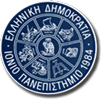Taganrog
The fish population of the Azov Sea: Caviar and other side products

Author: KRAIKOFSKY ALEXEI
The Strait of Kerch is a part of the Azov Sea connecting it to the Black Sea. The strait is 43 km. long in a straight line and 48 km. along the fairway, it is from 3,7 to 42 km. wide with an average depth of 5,5 m, and 18 m. as a maximum. This water body has a surface of 805 km2 and includes about 4,56 km3 of water1. It lies between the Kerch peninsula (the most eastern part of Crimea) on the West and Taman Peninsula (part of the North Caucasus) on the East. The hydrographic regime of the Strait is quite exceptional. It is defined by the interaction between the Azov Sea (shallow and relatively less salty) with the Black Sea (deep and relatively far more salty). As a result, the Strait water is circulating in two streams. The Azov stream is moving southwards and is much less salty than the Black sea stream moving to the North. In summer season the Azov stream is much warmer, while the Black Sea stream is significantly stronger because of the intensive evaporation of water in the Azov Sea. As a result, the Strait gets a lot of relatively cold and salty water from the South2. At the same time, in general, the Azov stream is dominating in the Strait and the major mass of water is moving southwards in accordance with the water discharge of the Don and the Kuban rivers3.
Dynamic circulation of water provides conditions for the rich and diverse fish population. It is important to note that the major part of the fish population in the Strait consists of migrating species moving from the Black Sea to the Azov Sea and vice versa. The annual cycle starts with the migration of the Black Sea herring Alosa immaculata from the Black Sea to the Azov Sea in March – April. Anchovy Engraulis encrasicolus moves the same way in the late April – early May. During all this period from March to June the Black Sea mullet Liza Aurata migrates northwards while the Azov Sea mullet Liza haematoheilus on the opposite goes for spawning to the Black Sea.
The autumn migration starts in July and until the late November these species return to the Black Sea to spend winter in the deeper waters. In winter time the Strait is very poor with the commercial fish4.
The banks of the Strait were settled and urbanized as early as in antiquity. Since that moment, the Strait is one of the busiest communication lines in the area. The increasing shipping led to the fast development of the port infrastructure and in general to the significant artificial change of environment. This process became especially pronounced since the 19th c., and included change of shoreline and underwater relief, water pollution, change of specific composition of marine biota due to overfishing. Significant climate change is also to be mentioned. At the same time the people had to develop strategies and technologies to be able to live side by side with the self-willed natural object and even to control it. In general the combination of intensive shipping and port activities with the big fisheries involving a lot of local inhabitants plays decisive role in the environmental history of the Strait of Kerch.
[1] See Eremeev V. N., Ivanov V. A., Il’in Yu. P. Okeanograficheskie usloviia I ekologicheskie problem Kerchenskogo proliva. Morskoi ekologicheskii zhurnal. #3. Vol. 2. 2003. P. 28.
[2] See for details Trotsenko B. G., Zhugailo S. S., Sebah L. K., Evchenko O. V., Zaremba N. B., Zagainyi N. A. Otsenka vliyaniya izmenchivosti gidrologicheskih, gidrohimicheskih I gidrobiologicheskih parametrov na bioproduktivnost Kerchenskogo proliva. Trudy VNIRO. Vol. 50. 2012: 86 – 97
[3] Eremeev V. N., Ivanov V. A., Il’in Yu. P. Okeanograficheskie usloviia I ekologicheskie problem Kerchenskogo proliva. Morskoi ekologicheskii zhurnal. #3. Vol. 2. 2003. P. 31 – 33.
[4] See for details Matishov G. G., Berdnikov S. V., Savitskii R. M. Ekosistemnyi monitoring I ocenka vozdeistviia razlivov nefteproduktov v Kerchenskom prolive. Avarii sudov v noiabre 2007 g. Rostov na Domu. Izdatelstvo UNC RAN. 2008. P. 27 – 28.
References
Eremeev V. N., Ivanov V. A., Il’in Yu. P. Okeanograficheskie usloviia I ekologicheskie problem Kerchenskogo proliva. Morskoi ekologicheskii zhurnal. #3. Vol. 2. 2003.
Trotsenko B. G., Zhugailo S. S., Sebah L. K., Evchenko O. V., Zaremba N. B., Zagainyi N. A. Otsenka vliyaniya izmenchivosti gidrologicheskih, gidrohimicheskih I gidrobiologicheskih parametrov na bioproduktivnost Kerchenskogo proliva. Trudy VNIRO. Vol. 50. 2012: 86 – 97.
Eremeev V. N., Ivanov V. A., Il’in Yu. P. Okeanograficheskie usloviia I ekologicheskie problem Kerchenskogo proliva. Morskoi ekologicheskii zhurnal. #3. Vol. 2. 2003. P. 31 – 33.
Matishov G. G., Berdnikov S. V., Savitskii R. M. Ekosistemnyi monitoring I ocenka vozdeistviia razlivov nefteproduktov v Kerchenskom prolive. Avarii sudov v noiabre 2007 g. Rostov na Domu. Izdatelstvo UNC RAN. 2008.
Back




